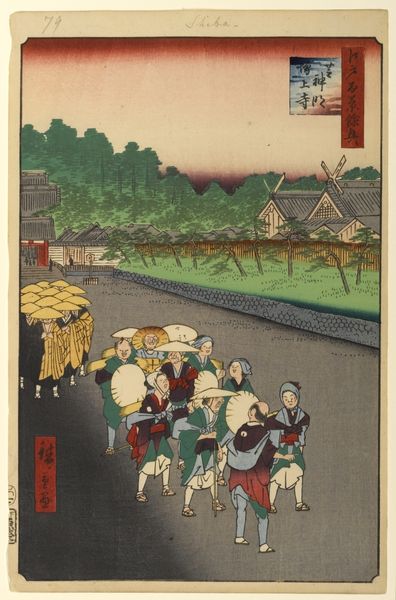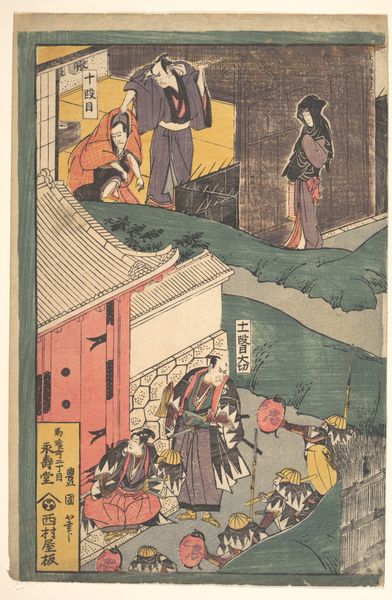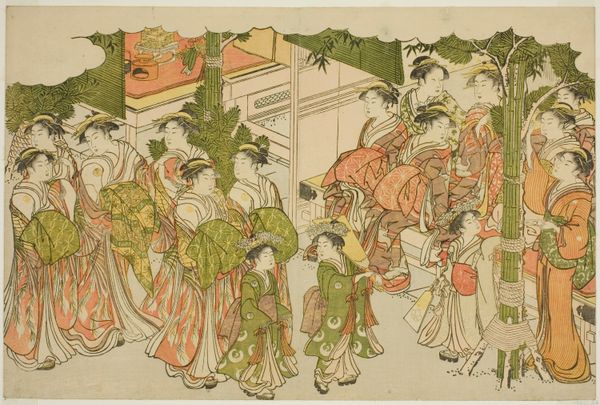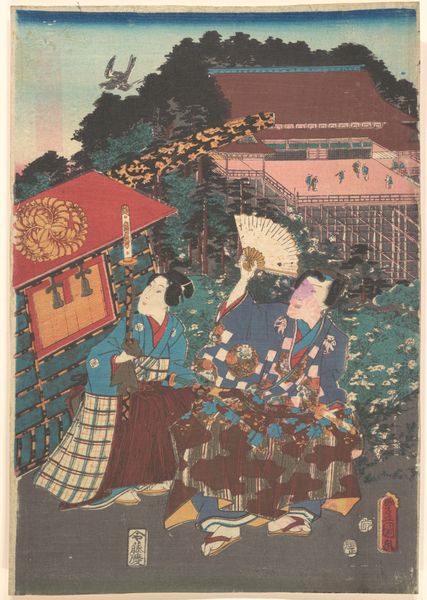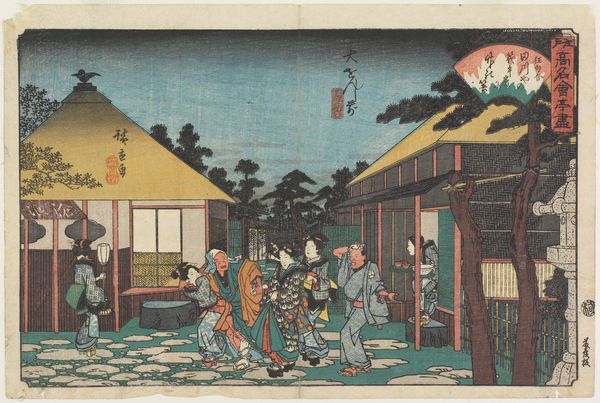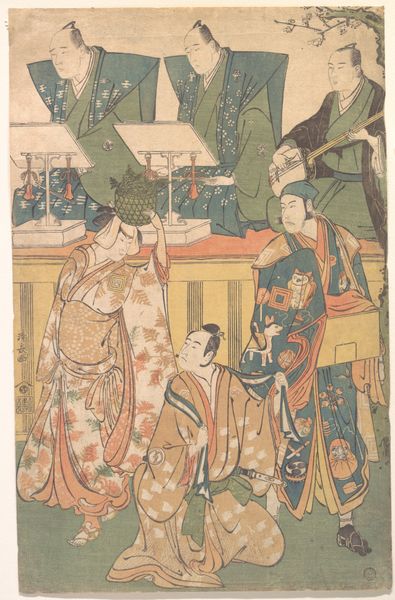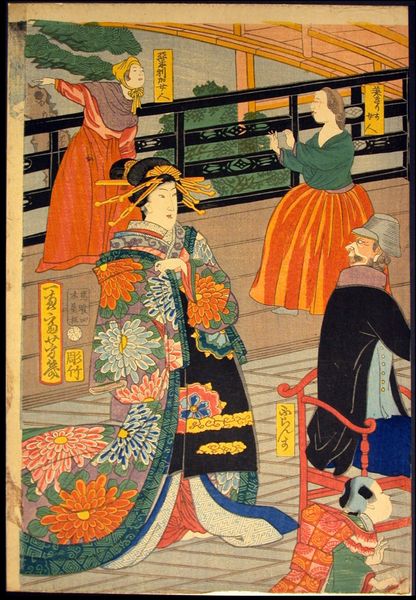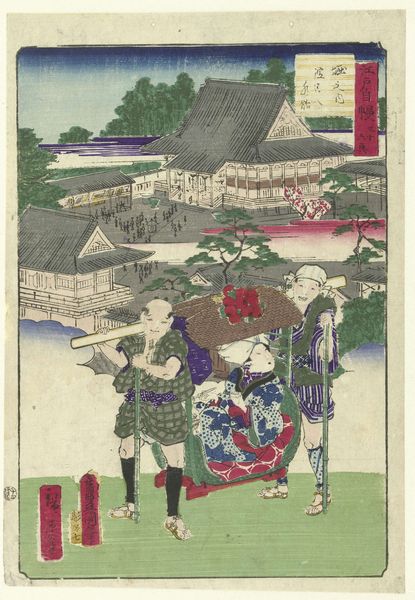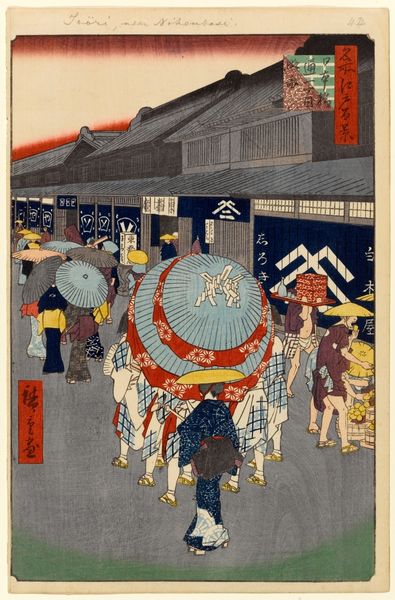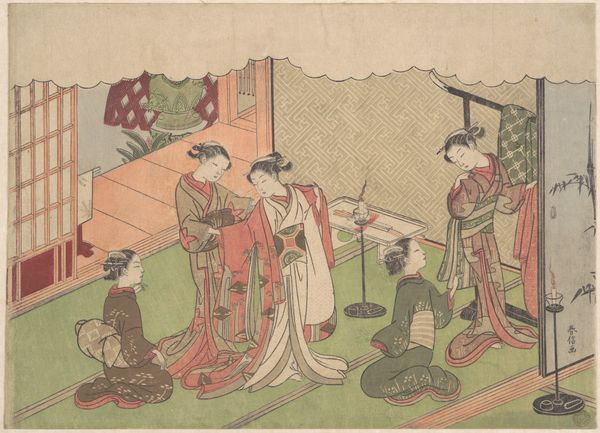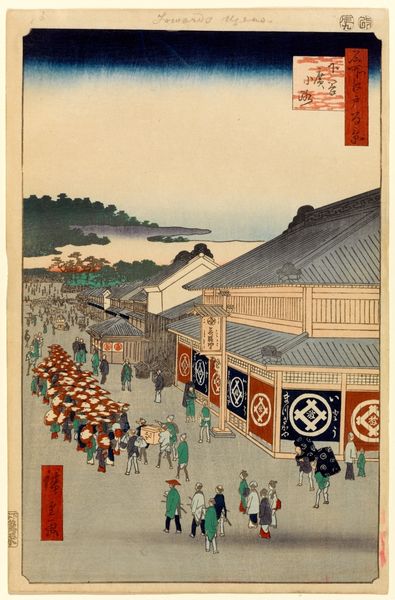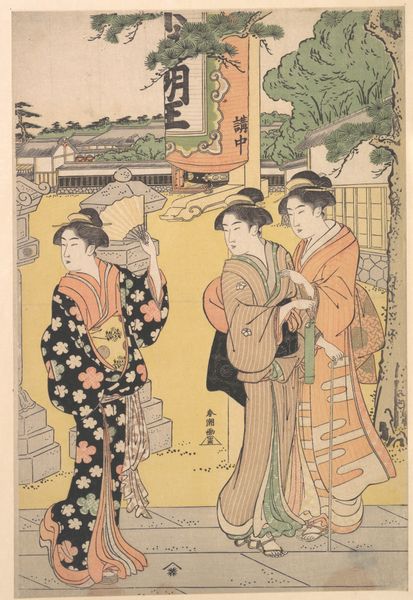
The Suruga District in the Eastern Capital Possibly 1858
0:00
0:00
print, ink
# print
#
asian-art
#
landscape
#
ukiyo-e
#
ink
#
cityscape
#
genre-painting
Dimensions: 13 5/16 × 8 11/16 in. (33.8 × 22 cm) (image, vertical ōban)
Copyright: Public Domain
Editor: This is “The Suruga District in the Eastern Capital,” a print, possibly from 1858, by Utagawa Hiroshige, housed at the Minneapolis Institute of Art. What strikes me most is how it captures the everyday hustle of city life. I’m curious, as a historian, how do you see this piece reflecting its time? Curator: This work gives us a window into Edo period society and the role of printmaking in shaping public perceptions. What do you notice about the figures represented? Consider their clothing, their expressions, and what they might be doing. Editor: Well, some of them are dressed in what looks like ceremonial garb, while others appear more ordinary. The ones in green seem particularly prominent. Curator: Precisely! The procession suggests a ritual, perhaps a festival or a religious observance. Hiroshige's choice to include such scenes reflects the importance of these events in the social fabric. These prints weren’t just art; they were a form of media. Do you think that changes how we see the image knowing it may be portraying contemporary figures and places? Editor: Definitely! It's like a snapshot of a specific moment, but it was also consumed as art by a broader audience. It almost feels like propaganda by displaying aspects of Japanese cultural. Curator: Propaganda is a loaded term, but there’s definitely a promotion of cultural identity at play. The inclusion of Mount Fuji in the distance reinforces that national pride. Printmaking in Japan really grew under the patronage of powerful military figures, especially the Shogunates. Editor: So the artistic vision here also helped advance a political goal to unite through culture? Curator: Exactly! Think of how photography shaped opinions in the American Civil War. Similarly, these prints provided controlled perspectives and helped construct a unified sense of Edo identity. Now do you think we need a photograph to make that happen? Editor: Wow, seeing it as both art and historical record completely changes my perspective. Thank you for opening my eyes. Curator: My pleasure! It's through these kinds of contextual understandings that art truly comes alive.
Comments
minneapolisinstituteofart almost 2 years ago
⋮
Here, Hiroshige depicted a street scene in Suruga-chø, near Nihonbashi. The building at the corner, as identified on the indigo shop curtains and the wooden board, is the famous Echigoya textile shop. A straw rope (shimenawa) festooned with fern fronds hangs from the building's joist-a traditional New Year's decoration. Two men in green robes are manzai dancers who perform a comical dance-and-song routine. Two women holding guitar-like instruments are torioi singers. Entering from the right is a daikagura troupe whose members perform the auspicious "lion dance" and a variety of acrobatic feats. With all these street performers strolling around, the streets in Edo on New Year's Day were undoubtedly very lively.
Join the conversation
Join millions of artists and users on Artera today and experience the ultimate creative platform.
